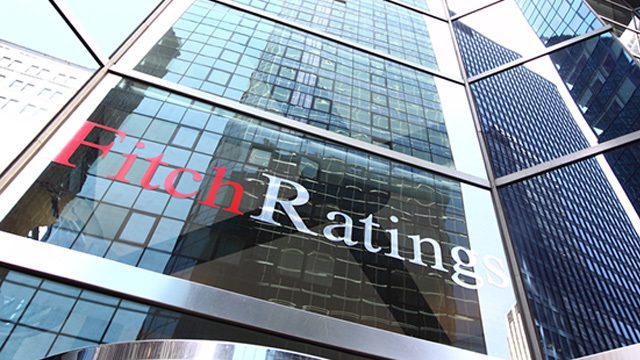SUMMARY
This is AI generated summarization, which may have errors. For context, always refer to the full article.

MANILA, Philippines – Credit rating agency Fitch Ratings kept the country’s investment credit rating with a positive outlook, amid indications of continued economic growth and manageable debt levels.
In its latest credit report released late Wednesday, March 29, Fitch Ratings affirmed the Philippines’ Long Term Foreign and Local Currency Issuer Default Ratings (IDRs) at “BBB-” with a positive outlook.
The ratings for the Philippines’ senior unsecured foreign and local currency bonds were also affirmed at “BBB-”.
“The Philippines’ rating reflects its continued strong and consistent growth performance, a robust net external creditor position, and government debt levels that are lower than the median of peers in the ‘BBB’ Ratings category,” Fitch Ratings said in its report.
Key positive indicators for Fitch Ratings included recent economic growth and the country’s position as a net creditor.
“The Philippines’ average real GDP (gross domestic product) growth for the 5 years to end-2016 was 6.6%, well above the ‘BBB’ median of 3.2%,” Fitch Ratings noted.
It also expects the country to sustain its strong growth momentum, with GDP forecast to increase by 6.8% and 6.7% in 2017 and 2018, respectively.
Fitch Ratings forecasts inflation to increase to 3.3% in 2017, up from 1.8% at end-2016, but remain within the central bank’s target of 2%-4%.
The credit watcher also took note of the Philippines’ position as a strong net external creditor.
“The Philippines’ current account has been in surplus since 2003, which has led to a steady increase in its foreign exchange reserves and supports its net external creditor position,” Fitch Ratings said.
“At end-2016, the Philippines’ net external creditor position was close to 13% of GDP, compared with the ‘BBB’ median of a net debtor position of 0.7% of GDP.”
But Fitch Ratings flagged the government’s shrinking current account balance, or the sum of total exports minus imports, as a potential issue, noting that it narrowed significantly to 0.2% of GDP at end-2016 from 2.5% at end-2015.
This was mainly due to an increase in capital goods imports and sluggish export growth, which led to a sharp increase in the trade deficit.
The credit watcher expects the current account to move into a modest deficit over 2017 and 2018 as increased spending on infrastructure is likely to drive strong growth in capital goods imports.
The current account, however, remains supported by a steady inflow of remittances, which increased by about 5% in 2016, and strong growth in services receipts related to the business process outsourcing (BPO) industry.
“The Philippines’ net external creditor position and healthy reserve position represent effective buffers against external shocks,” the credit watcher said.
Good signs
The Investor Relations Office (IRO) of the Bangko Sentral ng PIlipines (BSP) also highlighted the importance of the positive outlook with the rating, noting that of the 114 sovereigns rated by Fitch, only 6 are on positive outlook, 21 are on negative outlook, while the rest are on stable outlook.
The positive outlook, it added, indicates an upward trend for a credit rating over a one- to two-year period.
BSP Governor Amando Tetangco Jr pointed out that Fitch also recognized the Philippines’ strong banking sector metrics as a factor that supports the country’s credit standing. Banking sector liquidity, capitalization levels, and asset quality ratios remain strong.
“These macroeconomic conditions did not happen by chance. The country’s economic gains have been built from deeply rooted structural and sound policy reforms implemented over the years. Economic gains are the results of years of disciplined macroeconomic policy making,” he said.
Fitch Ratings’ assessment, the IRO also said, is in line with financial markets’ view of the Philippines’ strong credit quality given sustained growth.
The country’s growth in the 4th quarter of 2016 stood at 6.6%, marking the 72nd straight quarter of positive growth. Government debt to GDP also fell to 42.1% by end-2016 from a high of 74.4% in 2004.
The IRO added that Fitch Ratings is the only one among the 3 major international credit ratings agencies to still assign the Philippines the minimum investment grade rating of “BBB-“.
Moody’s Investors Service and Standard & Poor’s both rate the Philippines a notch above the minimum investment grade, at “Baa2” and “BBB”, respectively.
The peso opened stronger on Thursday, March 30, at P50.20 from P50.185 on Wednesday, while the Philippine Stock Exchange index (PSEi) was up 0.13% to 7,333.15 as of half-day trading. – Rappler.com
Add a comment
How does this make you feel?
There are no comments yet. Add your comment to start the conversation.